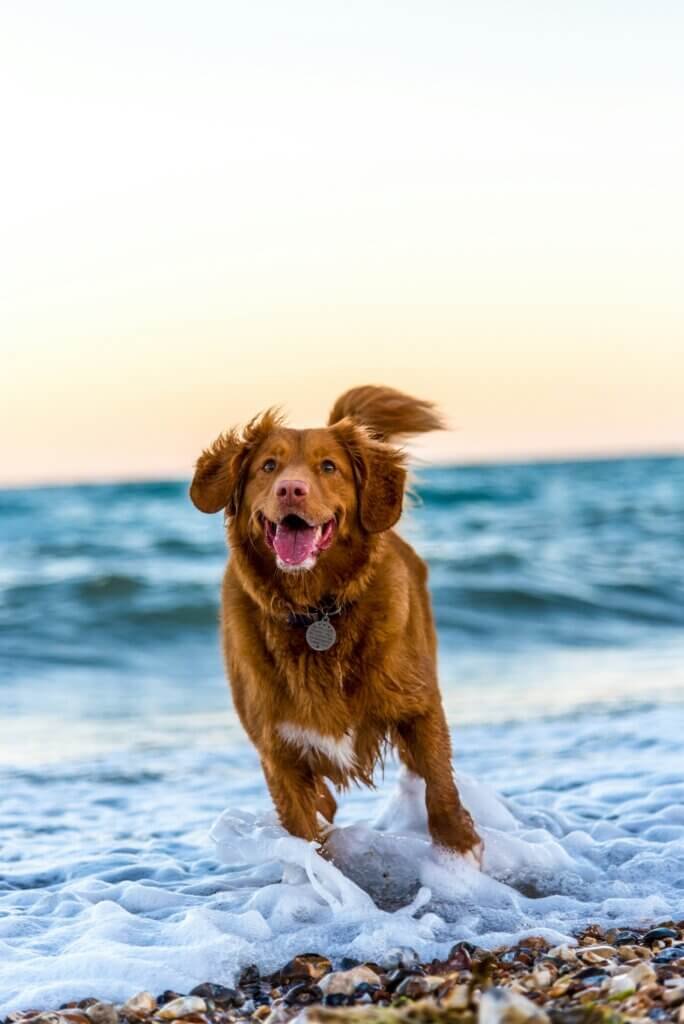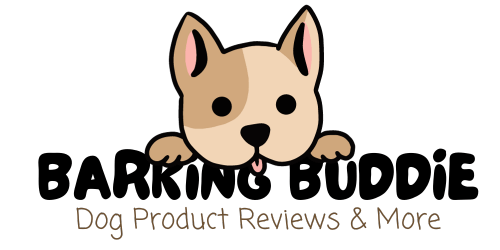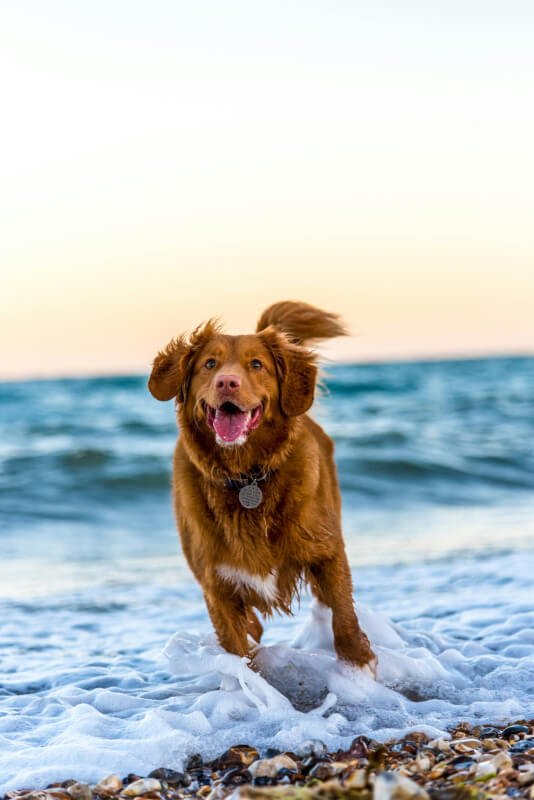Are you concerned about the safety of your furry friends in your neighborhood? If so, creating a neighborhood watch group for dog safety might be the perfect solution. By bringing together like-minded individuals who share a passion for protecting dogs, you can establish a strong and supportive community focused on ensuring the well-being of our beloved four-legged companions. In this article, we will explore the steps you need to take to create a neighborhood watch group specifically dedicated to dog safety, providing you with the tools and knowledge to make a difference in your community. So, grab a cup of coffee, sit back, and let’s dive into the world of neighborhood dog safety together.
Benefits of a Neighborhood Watch Group
Increased safety for dogs
Creating a neighborhood watch group can significantly enhance the safety of dogs in the community. This collaborative effort allows neighbors to look out for each other’s furry friends, helping to prevent any potential dangers or accidents. By having more eyes and ears on the lookout for any suspicious activities or risky situations, dog owners can have peace of mind knowing that their pets are protected.
Community bonding
One of the greatest benefits of a neighborhood watch group is the opportunity for community bonding. By coming together for a common cause, neighbors can develop stronger relationships and build a sense of unity within the neighborhood. The shared goal of dog safety can foster a stronger sense of belonging, promoting a friendly and supportive atmosphere where people feel comfortable and connected.
Reduced incidents of dog thefts and attacks
A neighborhood watch group can also play a crucial role in reducing incidents of dog thefts and attacks. With vigilant neighbors keeping an eye out for any suspicious behavior, potential criminals are deterred from targeting dogs in the community. The increased presence of the watch group can act as a deterrent, ensuring that dogs are safer and less vulnerable to theft or other harmful situations.
Steps to Create a Neighborhood Watch Group
1. Establish the need for a neighborhood watch group
Begin by gauging the interest and need for a neighborhood watch group focused on dog safety. Talk to your neighbors, particularly dog owners or those passionate about dogs, to determine their level of concern and willingness to participate. By identifying the need for such a group, you can better organize and rally support for its creation.
2. Recruit interested neighbors
Once you’ve established the need for a neighborhood watch group, reach out to your neighbors and recruit those who are genuinely interested in promoting dog safety within the community. Seek out individuals who have a genuine love for dogs and are willing to actively participate in the watch group’s initiatives. The more dedicated and passionate individuals you can recruit, the more effective the group will be.
3. Hold an initial meeting
Organize the first meeting of the neighborhood watch group to discuss the goals, objectives, and expectations. Choose a suitable location and time that accommodates the majority of interested neighbors. During this meeting, it’s important to introduce the concept of the neighborhood watch group and highlight the benefits it can bring to the community. Encourage open discussions, allowing everyone to voice their opinions, concerns, and ideas.
4. Define the objectives and responsibilities
In the initial meeting, define the primary goal and objectives of the neighborhood watch group. Is the group primarily focused on preventing dog thefts, ensuring the safety of dogs during walks, or addressing any other specific concerns? Clearly outline the responsibilities and roles of each member to ensure a smooth functioning of the group. It’s essential to discuss the level of commitment required from everyone involved, as well as any legal liabilities or limitations that need to be considered.
5. Develop a communication plan
Effective communication is key to the success of any neighborhood watch group. Determine the best communication channel for the group, such as a WhatsApp group or an email list, to share important updates and safety tips. Encourage neighbors to report any suspicious activities or incidents they observe, and establish emergency contact information. By having a robust communication plan in place, the group can stay connected and respond promptly to any emergencies or safety concerns.
6. Set up a schedule for patrols
Creating a schedule for regular patrols is crucial for maintaining a proactive presence within the neighborhood. Assign specific areas to each patrol team, ensuring comprehensive coverage of the entire community. Determine the ideal hours for patrols based on when dog owners are most likely to walk their pets. It’s essential to set clear guidelines for what to look for while patrolling, whether it’s identifying suspicious individuals or potential hazards, and to encourage documentation and reporting of any concerns.
7. Establish relationships with local law enforcement
Building strong relationships with local law enforcement, such as the police or animal control departments, is beneficial for the neighborhood watch group. Coordinate with these authorities to request their support and guidance in promoting dog safety. Exchange vital contact information so that the watch group can easily reach out for assistance when necessary. Collaboration on special initiatives or joint patrols can further strengthen the bond between the neighborhood watch group and law enforcement.
8. Organize training sessions
Training sessions can equip members of the neighborhood watch group with the necessary knowledge and skills to effectively promote dog safety. Arrange workshops on dog safety and self-defense, educating members on identifying suspicious behavior and taking appropriate action. Basic first aid for dogs should also be covered, ensuring that members are prepared to handle any emergencies or injuries. Additionally, provide resources on responsible pet ownership to educate the community and prevent potential hazards.
9. Maintain regular meetings and updates
To ensure the continued success of the neighborhood watch group, it’s crucial to have regular meetings and updates. Schedule meetings on a periodic basis to discuss any challenges, progress, or new initiatives. This provides an opportunity for members to share their experiences, exchange ideas, and address any concerns. Regular updates will help keep everyone engaged and motivated, ensuring that the group remains active and effective in ensuring dog safety within the community.
10. Evaluate and adapt as necessary
Periodically evaluate the effectiveness of the neighborhood watch group and identify areas that require improvement. This can be done through feedback sessions or surveys to gather input from members and the community. Adapt strategies as necessary to address changing circumstances and emerging concerns. It’s important to recognize and appreciate the efforts of all members, as their dedication and commitment play a crucial role in promoting dog safety and maintaining a secure neighborhood.

Recruiting Neighbors
Identify dog owners and dog lovers
When recruiting neighbors for the neighborhood watch group, focus on identifying those who are dog owners or have a genuine love for dogs. Seek out individuals who have a personal stake in promoting dog safety and who understand the importance of their pets’ well-being. Dog owners are more likely to be invested in safeguarding their own pets and will be valuable allies in promoting the overall safety of dogs in the community.
Spread the word through flyers and social media
To reach a wider audience, utilize flyers and social media platforms to spread the word about the neighborhood watch group. Design visually appealing flyers that highlight the group’s goals and invite interested individuals to join. Share these flyers on community bulletin boards, local pet stores, and veterinarian offices. Additionally, create social media posts and encourage others to share them to reach even more potential members.
Host informational events
Organize informational events within the community to raise awareness about the neighborhood watch group and its mission. These events can include dog safety demonstrations, guest speakers, or Q&A sessions. By creating opportunities for neighbors to learn more about the group and its initiatives, you can encourage their active participation and inspire them to join the cause.
Collaborate with local pet businesses
Reach out to local pet businesses, such as pet stores, groomers, and dog trainers, and form partnerships to support the neighborhood watch group’s efforts. Collaborate on joint initiatives or events to further promote dog safety and responsible pet ownership within the community. These businesses can also help spread the word about the group and recruit interested individuals who are passionate about dogs and their well-being.
Initial Meeting
Choose a suitable location and time
Select a suitable location and time for the initial meeting that is convenient for as many neighbors as possible. Consider hosting the meeting in a community center, local park, or even someone’s home. By choosing a welcoming and easily accessible location, you can encourage maximum attendance and participation.
Introduce the concept of the neighborhood watch group
In the initial meeting, take the time to introduce the concept of the neighborhood watch group to all attendees. Explain the purpose and goals of the group, focusing on promoting dog safety within the community. Emphasize the importance of having a proactive approach to ensure the well-being of everyone’s beloved pets.
Discuss potential issues and concerns
Encourage an open discussion during the initial meeting to allow all attendees to voice their concerns, issues, or any previous incidents related to dog safety. Create a safe space where everyone feels comfortable sharing their stories and experiences. This discussion will help establish the context and urgency of the group’s mission and lay the groundwork for collaboration and mutual support.
Encourage active participation
Throughout the initial meeting, encourage active participation from all attendees. Emphasize the importance of collaboration and the collective effort required to promote dog safety effectively. Invite attendees to share their ideas, suggestions, and even offer to take on specific roles within the group. By fostering a sense of ownership and involvement, you can ensure that the neighborhood watch group becomes a collective responsibility for the entire community.

Objectives and Responsibilities
Define the primary goal of the watchdog group
In the initial meeting, it’s essential to define the primary goal of the neighborhood watch group focused on dog safety. The goal could be to reduce dog thefts, prevent dog attacks, or even raise awareness about responsible pet ownership. By setting a clear objective, the group can establish a shared purpose and work collectively towards achieving it.
Establish the role of each member
Define the responsibilities and roles of each member within the neighborhood watch group. Clearly communicate what is expected of each member and the specific tasks they may be assigned. This could include patrolling specific areas, reporting suspicious activities, organizing training sessions, or maintaining the communication channels. By assigning responsibilities, everyone knows what they need to contribute, ensuring the smooth functioning of the group.
Determine the level of commitment required
Discuss the level of commitment required from members within the neighborhood watch group. Some individuals may be able to actively participate in patrols and attend regular meetings, while others may be limited to contributing through communication and reporting. By understanding each member’s availability and commitment, the group can distribute responsibilities effectively and ensure the group’s sustainability in the long run.
Consider legal liabilities and limitations
It’s important to consider any legal liabilities and limitations that may arise from the activities of the neighborhood watch group. Ensure that all members understand the boundaries within which they can operate and report any concerns or incidents. Familiarize yourself with local laws and regulations regarding citizen-led watch groups and ensure that members adhere to them at all times.
Communication Plan
Create a communication channel (e.g., WhatsApp group, email list)
Establish a dedicated communication channel for the neighborhood watch group to ensure prompt and efficient dissemination of information. Popular options include creating a WhatsApp group or an email list. The chosen channel should be easily accessible to all members and allow for quick and convenient communication.
Share important updates and safety tips
Regularly share important updates and safety tips within the communication channel. This can include information about recent dog thefts, reports of suspicious activities, or reminders about responsible pet ownership practices. Keeping the entire group informed and alert helps maintain a proactive stance and ensures that members are prepared to address any potential risks or concerns.
Encourage neighbors to report suspicious activities or incidents
Encourage all members to actively report any suspicious activities or incidents they observe within the community. Emphasize the importance of documentation and accurate reporting to assist law enforcement or animal control authorities, if required. Make it clear that every member’s observation is valuable and contributes to the overall safety of the neighborhood, creating a culture of vigilance and support.
Establish emergency contact information
Ensure that all members have access to essential emergency contact information, including local law enforcement and nearby veterinary clinics. In case of urgent situations or emergencies, it is vital to have these contacts readily available. Establishing this information within the communication channel ensures that it can be easily accessed by all members and can be quickly shared with authorities or other relevant parties, if necessary.

Patrol Scheduling
Create a rotating patrol schedule
To maintain a consistent presence within the neighborhood, create a rotating patrol schedule. Assign different members to patrol specific shifts and days, ensuring comprehensive coverage throughout the week. A rotation system allows all members an equal opportunity to participate actively and contribute to the community’s overall safety.
Assign specific areas to each patrol team
Divide the neighborhood into specific areas and assign each patrol team a designated area to cover during their shift. By assigning specific areas, each team can focus on monitoring a particular region more effectively, increasing their visibility and familiarity with their surroundings. This allows for a more comprehensive surveillance system and ensures that no area is left unattended.
Determine the ideal patrol hours
Consider factors such as dog walking patterns and previous incidents to determine the ideal patrol hours. Identify the times when dog owners are most likely to take their pets for walks or be out in the neighborhood. By scheduling patrols during these peak hours, the group can maximize its impact and identify potential risks or threats more efficiently.
Ensure clear guidelines for what to look for while patrolling
Provide clear guidelines to all patrol team members regarding what to look for during their patrols. This can include identifying any suspicious individuals or unusual behavior, noting potential hazards such as loose gates or broken fences, or spotting any signs of dog theft attempts. By establishing these guidelines, the group ensures a focused effort and a consistent approach to promoting dog safety.
Relationships with Law Enforcement
Coordinate with local police or animal control departments
Reach out to local police or animal control departments and coordinate with them to establish a collaborative relationship. Explain the goals and objectives of the neighborhood watch group and how it aligns with their efforts to ensure community safety. By working together, the group can benefit from the expertise and resources of these authorities, enhancing the overall effectiveness of their initiatives.
Request their support and guidance
Seek the support and guidance of local law enforcement in implementing the neighborhood watch group’s activities. Request their presence during training sessions or meetings to provide advice on crime prevention strategies, identifying suspicious behaviors, or understanding local laws related to dog safety. The involvement of law enforcement establishes credibility and legitimacy for the group, while also fostering a sense of trust and confidence within the community.
Exchange vital contact information
Establish a formal communication channel with local law enforcement, exchanging vital contact information. This allows the group to reach out to authorities promptly in case of emergencies or when reporting any criminal activities. Provide them with details about the neighborhood watch group’s communication channels and encourage consistent and open lines of communication to ensure effective collaboration.
Collaborate on special initiatives or joint patrols
Explore opportunities to collaborate with local law enforcement on special initiatives or joint patrols. This can include organizing joint patrols with law enforcement officers to cover specific high-risk areas or hosting informational sessions on dog safety in collaboration with them. By working together, the group and law enforcement can send a strong message against dog thefts and attacks, while also enhancing the overall sense of safety within the community.

Training Sessions
Arrange dog safety and self-defense workshops
Organize training workshops focused on dog safety and self-defense for members of the neighborhood watch group. These workshops can be led by qualified professionals or experts in the field. They should cover topics such as how to prevent dog thefts, recognizing signs of aggression or potential attacks, and teaching basic self-defense techniques to protect both humans and dogs in case of emergencies.
Educate on identifying suspicious behavior
Train members on identifying suspicious behavior or activities that may pose a threat to dogs within the community. Provide guidelines on what to look for, such as individuals loitering near parks or possessing suspicious equipment that may be used in dog theft. By educating members on how to identify potential risks and report them, the group can take proactive measures to prevent any harm to the dogs in the neighborhood.
Teach basic first aid for dogs
Incorporate basic first aid training for dogs into the neighborhood watch group’s training sessions. Members should be trained on techniques such as performing CPR on dogs, treating common injuries, and recognizing early signs of distress or illness. Equipping members with these skills ensures that immediate assistance can be provided in case of emergencies, potentially saving lives or minimizing the impact of injuries.
Provide resources on responsible pet ownership
Education on responsible pet ownership should be an integral part of the neighborhood watch group’s training sessions. Provide resources, brochures, or handouts that cover topics such as proper leash and collar use, the importance of vaccinations, and obedience training for dogs. By promoting responsible pet ownership, the group helps prevent potential hazards and creates a safer environment for both dogs and their owners.
Evaluation and Adaptation
Assess the effectiveness of the neighborhood watch group
Regularly assess the effectiveness of the neighborhood watch group in promoting dog safety within the community. Evaluate whether the goals and objectives set in the initial stages are being met and if any impact can be observed. Analyze factors such as the number of reported incidents, community feedback, and overall engagement within the group to gauge its effectiveness accurately.
Identify areas for improvement
Identify areas within the neighborhood watch group’s initiatives that may require improvement or adjustment. This could include enhancing communication channels, refining patrol schedules, or addressing any limitations or challenges encountered. By identifying areas for improvement, the group can continuously enhance its efforts and adapt to the changing needs and dynamics of the community.
Adapt strategies based on changing circumstances
As circumstances within the community evolve, the neighborhood watch group should be agile and adaptable. Adapt strategies and approaches as necessary to address new concerns or emerging trends in dog safety. By remaining flexible and open to change, the group can continue to make a meaningful impact and effectively respond to the evolving needs of the community.
Recognize and appreciate the efforts of all members
Lastly, it’s crucial to recognize and appreciate the efforts of all members within the neighborhood watch group. Regularly acknowledge the valuable contributions made by each member, highlighting their commitment to dog safety and the overall well-being of the community. Recognize milestones, share success stories, and promote a culture of appreciation and gratitude, as this will foster stronger bonds and encourage long-term participation.



